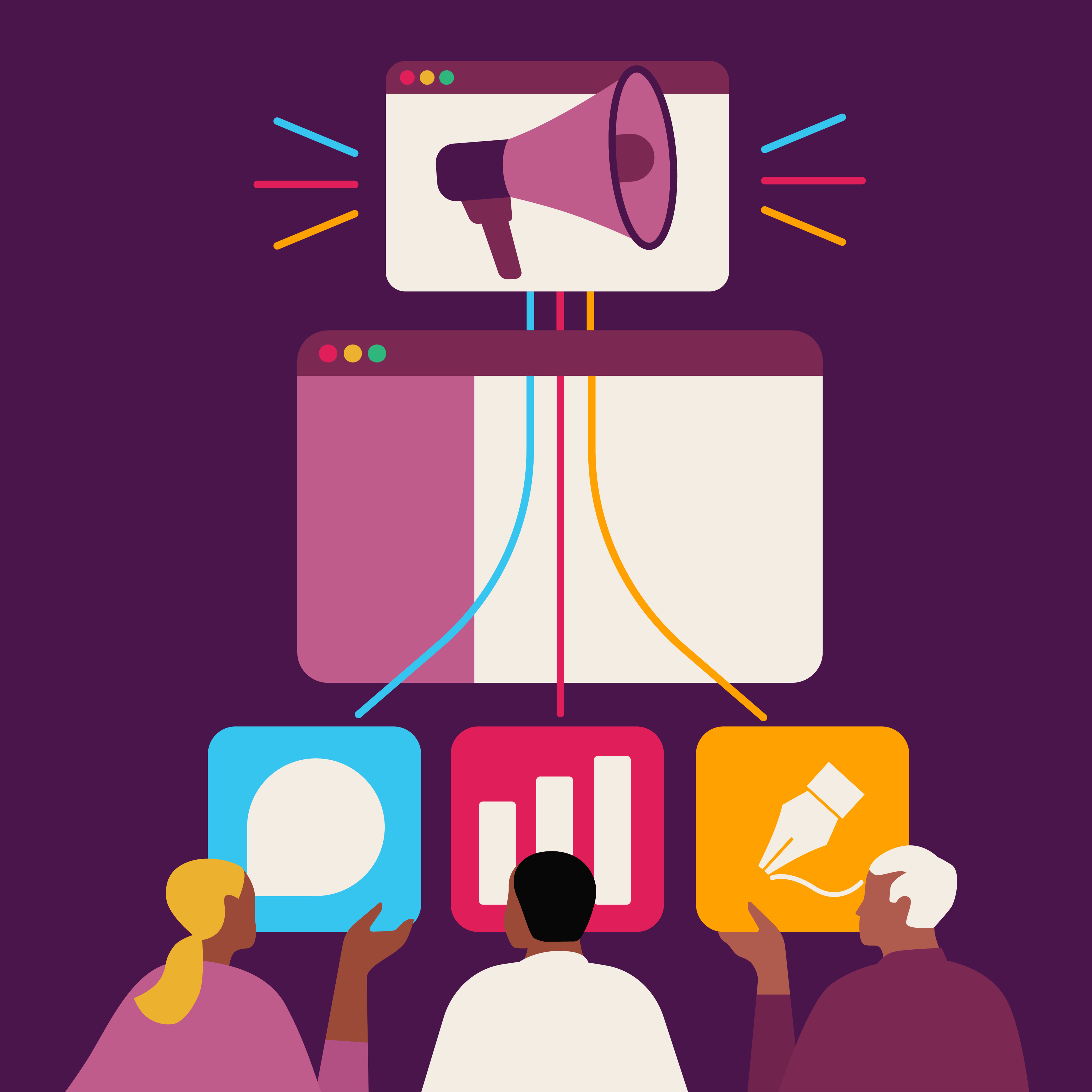Every team wants to achieve more, but “more” can mean very different things. You might produce higher output but waste resources — or maybe you’re saving time but ultimately deliver less impactful work. The difference lies in understanding how efficiency vs. productivity really work together.
In this guide, you’ll learn the definitions (with a quick efficiency formula), the relationship between them, and practical ways to improve both without burning out your team or lowering quality.
What is productivity?
Productivity measures how much work gets done within a specific period of time. It’s usually expressed as output produced per unit of time. For example, you could measure it as tasks completed per hour or projects finished per week.
High productivity doesn’t always mean long hours. It’s about focusing energy on the work that creates the most value — about real progress. It reflects how effectively people turn time and effort into meaningful results. In many teams, stronger productivity comes from clarifying priorities, sharing context more quickly, and staying aligned on what actually moves the work forward.
In short, productivity is the rate of achievement: how much meaningful progress your team makes toward its goals within the time and resources available. You measure success by outcomes, not just activity.
Examples of high productivity
High productivity can look different from one role to another, but it always centers on meaningful progress.
- A marketing team schedules, writes, and publishes an entire campaign in one week because they’ve automated approvals and content tracking.
- An engineer completes a feature ahead of deadline by using templates and code libraries that reduce setup time.
- A support team handles more customer tickets per day without rushing because shared documentation helps them respond accurately the first time.
Notice how optimizing processes is still a part of productivity. When you can decrease distractions and have total clarity on what you need to complete work, that’s when productivity grows.
What is efficiency?
Efficiency measures how well resources — like time, energy, or budget — are used to achieve a result. It’s about getting the same outcome with less effort or reaching better outcomes with the same effort.
The simplest way to think about it is through an equation:
Efficiency = (Useful Output ÷ Total Input) × 100
For example, if a project was expected to take eight hours but only took seven, its efficiency is roughly (8 ÷ 7) × 100 = 114 percent. The work met the goal faster and used fewer resources without lowering quality.
Efficiency in practice
Efficiency shows up when teams find smarter ways to reach the same goals. You aren’t trying to cut corners, but you do want to remove obstacles that keep people from doing their best work — and with less wasted effort.
That might mean:
- Using automation tools to route routine requests instead of tracking them manually.
- Standardizing handoff templates so projects move smoothly between departments.
- Replacing scattered chat threads with organized channels where information stays visible.
Each of these changes saves time, reduces context switching, and frees people to focus on high-value work. Efficiency thrives when the systems around the team make it easier to do the right things, not just more things.
Productivity vs. efficiency: differences and relationship
Efficiency and productivity are closely connected, but they focus on different outcomes. Productivity is about output, or how much work gets done. Efficiency is about optimization, which is how well that work uses available resources.
The tension shows up in everyday trade-offs. When productivity climbs too quickly, efficiency can drop. Teams might deliver more projects but burn extra hours, duplicate work, or sacrifice quality to stay on schedule. The reverse can also happen: focusing too much on refining processes can slow momentum and make it harder to deliver results on time.
You’re aiming for balance. The most effective teams combine consistent output with thoughtful use of time and energy. They keep an eye on both elements — how much gets done and how thoughtfully it gets done — to sustain long-term progress.
Strategies to improve productivity and efficiency
Obviously, both productivity and efficiency are important, so you don’t want to neglect either. Here’s how you can work on both and make your business all the more effective.
Prioritize work and focus on impact
Not every task deserves equal attention. Productive teams put their effort where it counts most. Start by reviewing everything on your plate, like projects, meetings, and recurring requests, and ask which activities directly support business goals or customer outcomes. Those high-leverage tasks stay because they add the most value; the rest either get rescheduled, simplified, or dropped.
Once priorities are clear, share them in a visible space so everyone knows what matters most. When a new request comes in, teammates can quickly check whether it aligns with existing goals instead of guessing. Over time, that shared focus builds momentum and turns “busy” into measurable progress.
Automate and streamline workflows
Repetitive, low-value tasks quietly drain hours each week. Automation helps teams reclaim that time for higher-value work. With tools like bots, custom templates, and the Slack Workflow Builder, you can create no-code sequences that handle routine steps automatically.
For example, a workflow could collect form submissions, notify the right channel, and log the request in a shared tracker without a single copy-paste. Or a new-hire onboarding workflow could guide employees through setup tasks while notifying IT and HR in real time. When everyday tasks move forward on their own, people have more room for creative and strategic thinking.
Optimize processes and eliminate waste
Every team has steps that once made sense but no longer do. Review how work actually moves from start to finish, and ask where effort gets stuck. Are there approvals that sit in inboxes too long? Reports that no one reads anymore? Those are signs of process waste.
Simplify by consolidating redundant tools, combining meetings with similar agendas, or creating shared templates that streamline individual tasks. Ask team members what slows them down — they usually know better than any dashboard. Small refinements add up fast. Over time, these adjustments shorten cycle times and make daily operations feel lighter.
Invest in tools and training
Great tools are only as useful as the people using them. Before adding another platform, make sure it genuinely solves a pain point, like reducing manual data entry or improving visibility into projects. Then dedicate time for hands-on training so the whole team feels confident, not overwhelmed.
Encourage people to share shortcuts or creative uses they discover. For instance, a single integration between your CRM and communication platform can save hours of context-switching each week. When tools feel intuitive and team members know how to get the most from them, efficiency becomes part of the routine.
Monitor metrics and adjust
Measuring progress is a great way for teams to stay grounded in reality, to either see the progress they’ve already made or see where processes could be improved. Track both productivity and efficiency metrics, and then take time each month to discuss what those numbers actually mean. Useful metrics to track include:
- Output per person or per hour: Measures productivity by comparing completed work to time invested.
- Cycle time: The average time it takes to complete a task or project, from start to finish.
- Resource utilization: Evaluates how effectively time, tools, and budget are used across projects.
- Rework rate: Tracks how often tasks or deliverables need to be redone, signaling inefficiencies in process or communication.
- Employee feedback: Regular pulse checks reveal where workloads feel balanced or overwhelming.
Numbers alone don’t tell the whole story, but they reveal where to look closer.
If a team’s output is high but late nights are common, the data points to inefficiency, not success. On the other hand, if efficiency scores rise but deliverables drop, it might be time to revisit priorities. Treat these insights as conversation starters, not judgments or verdicts. When teams regularly review and fine-tune their approach, improvement becomes part of their culture and continuously pays off.
Guard quality and well-being
Efficiency and productivity both rely on people’s energy and attention. Protecting those resources keeps performance sustainable. Encourage teams to block time for deep work and recovery, and normalize realistic pacing over constant urgency.
Quality also grows when space exists for focus. Build review steps into the process, define what “done” looks like for each task, and celebrate thoughtful work instead of just quick turnarounds. Managers can model healthy balance by stepping away at reasonable hours, too, and reinforcing that rest is part of the job, not a reward for it. When people feel supported and trusted to manage their energy, they tend to deliver consistent, high-quality work that benefits the whole team.
Role of tools in improving efficiency and productivity
When work gets scattered across too many apps, even quick decisions can slow down. Slack brings focus back to the flow of work by keeping people, updates, and tools in one shared space. Messages and files stay tied to their projects so that everyone has the same context without endless searching or backtracking.
The Productivity category in the Slack App Directory adds flexibility with integrations that support everything from task tracking to scheduling. Paired with Workflow Builder, teams can create custom automations that handle handoffs, status updates, or requests automatically.
When tools work together, collaboration feels effortless. Fewer clicks. Faster decisions. Clearer progress. See how nine businesses boosted efficiency and productivity with Slack, then try Slack free to experience the difference yourself.
Efficiency vs. productivity FAQs
 |
Try Slack for free todayWhatever work you do, you can do it in Slack. Get the power and alignment you need to do your best work. |






